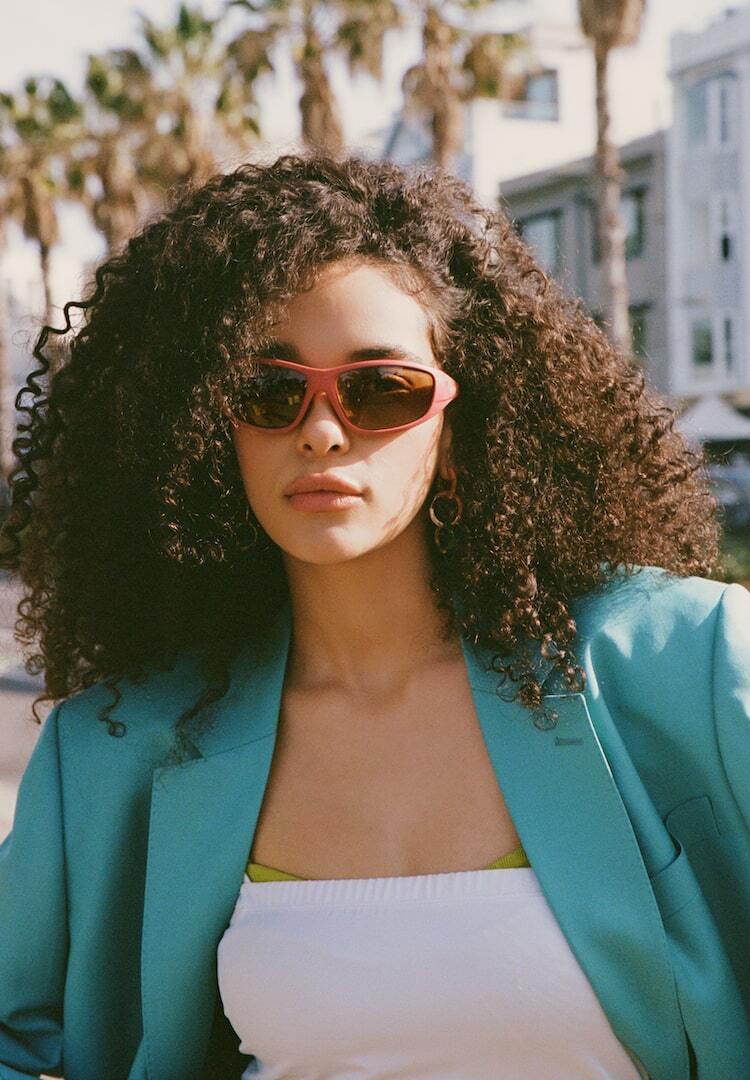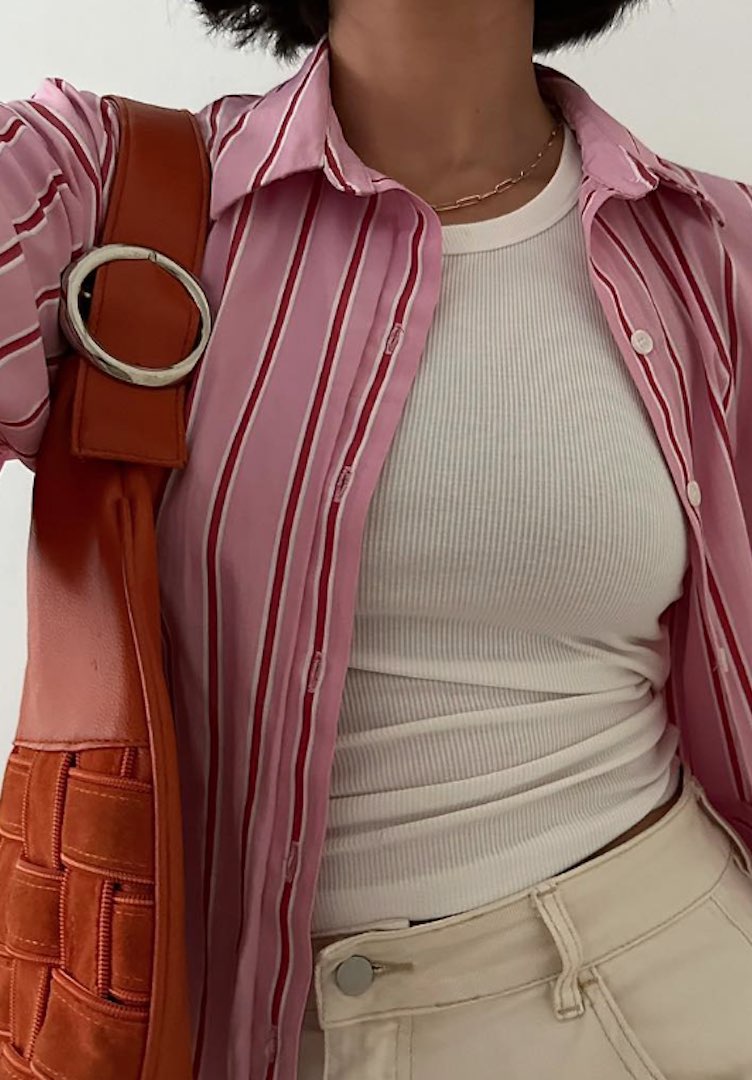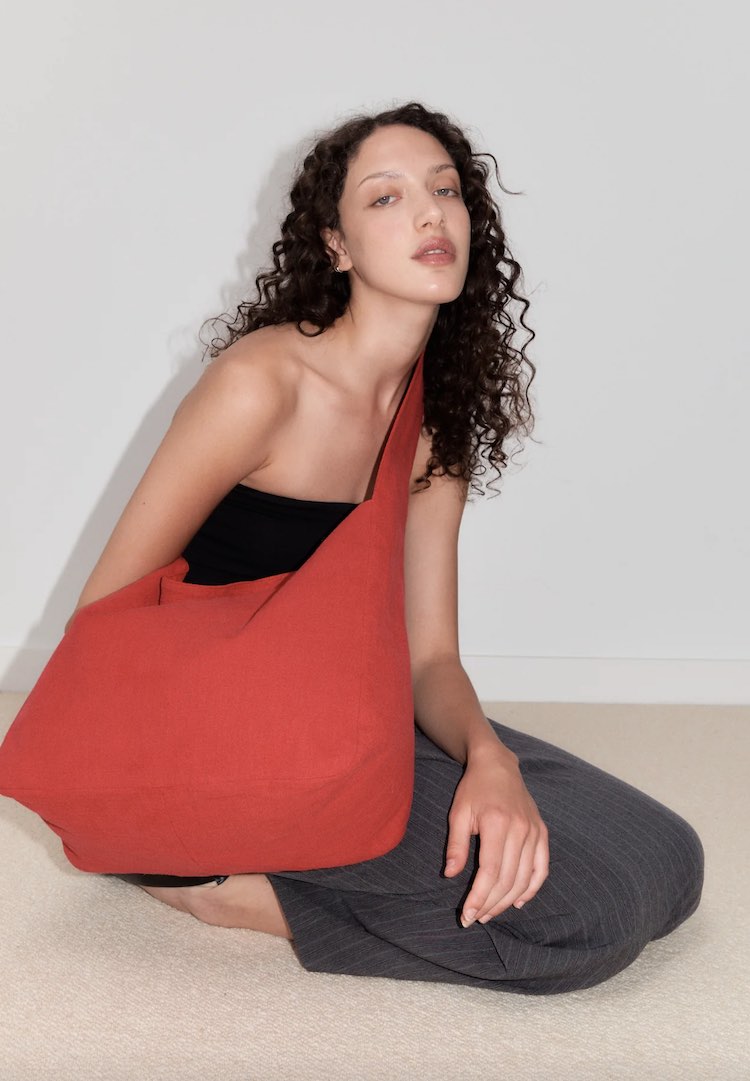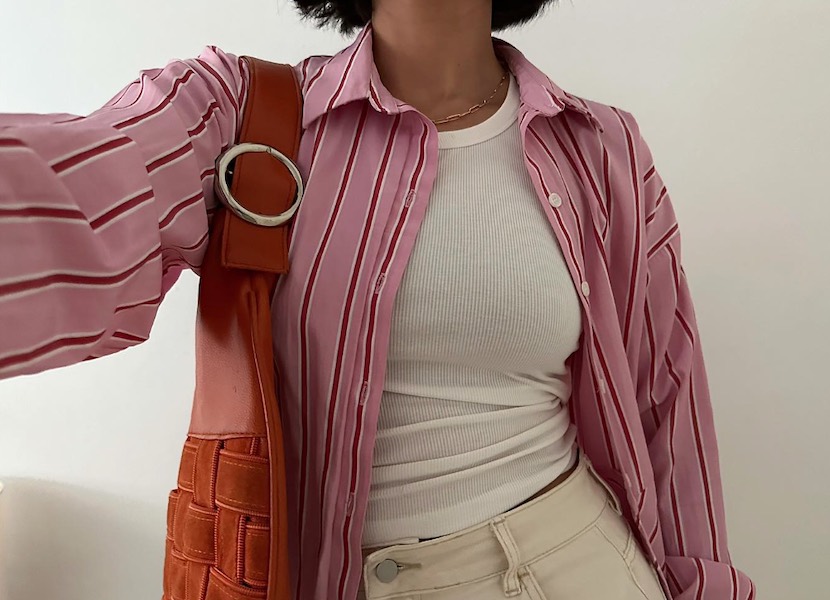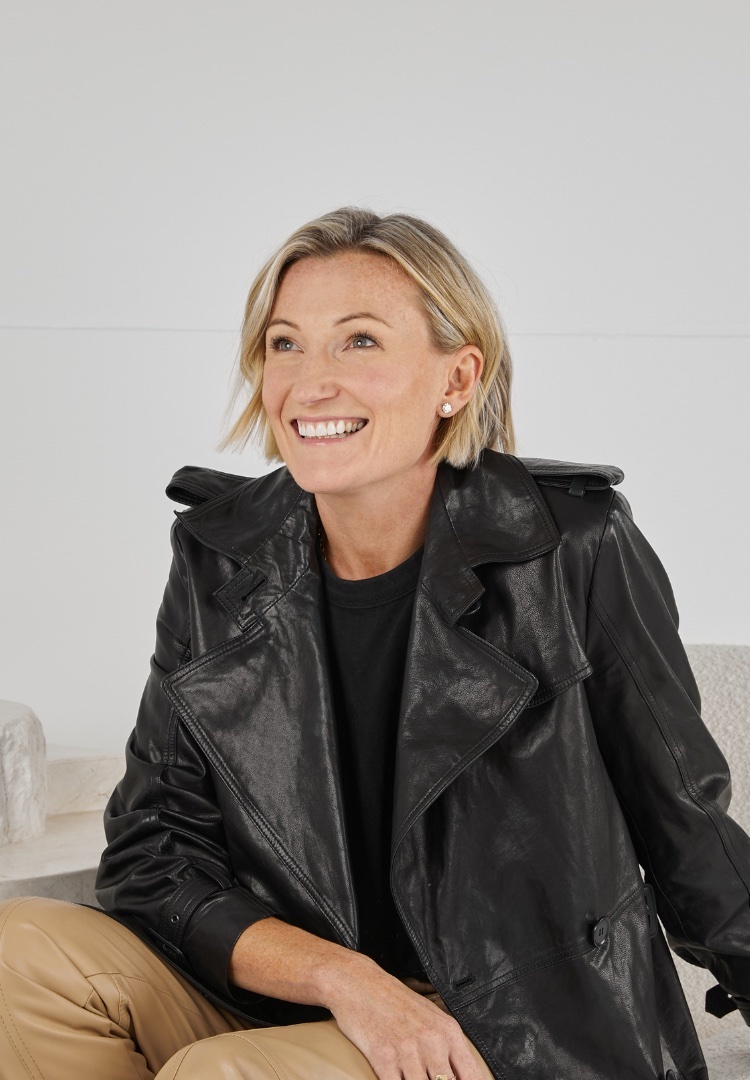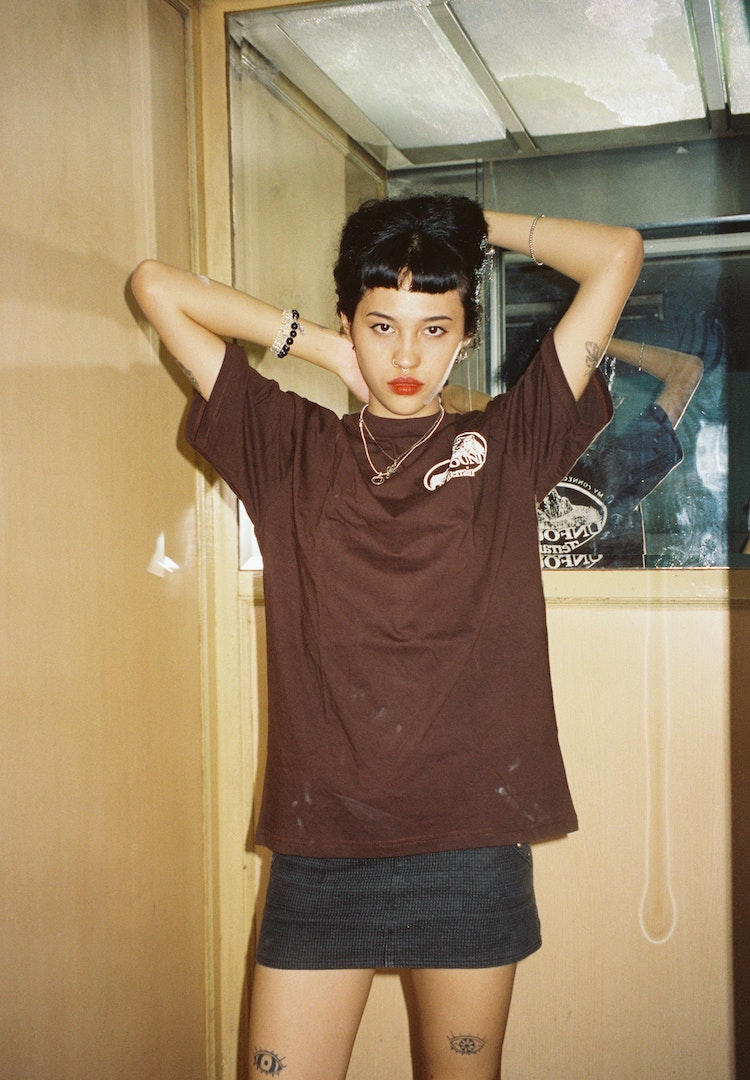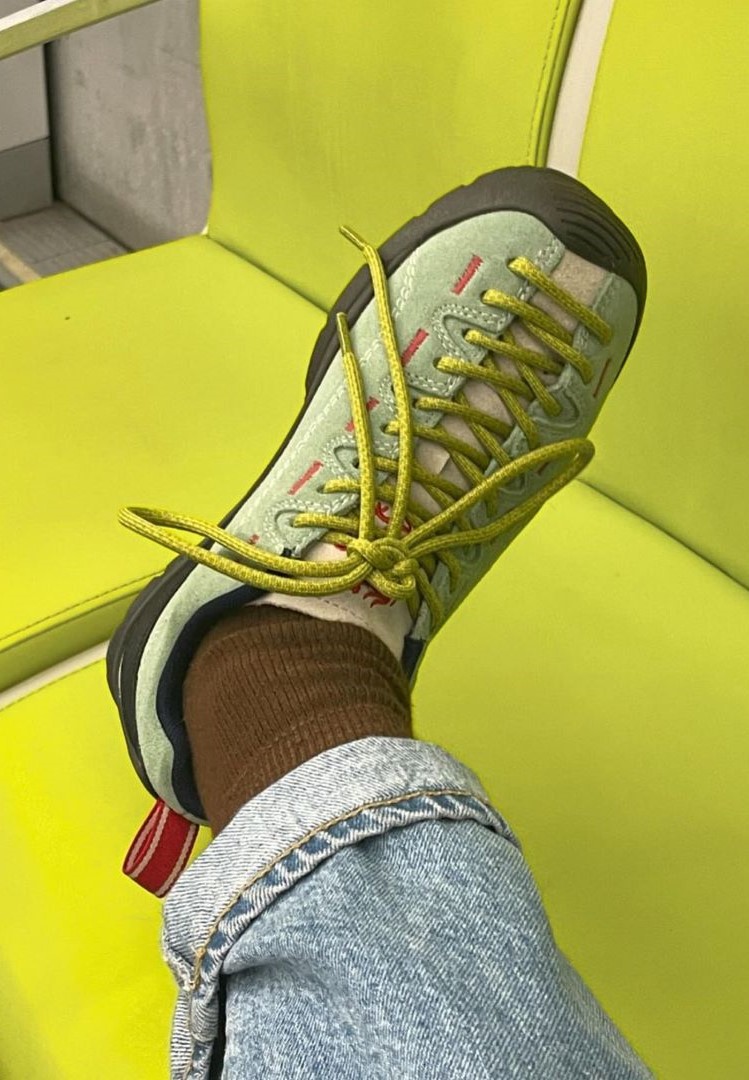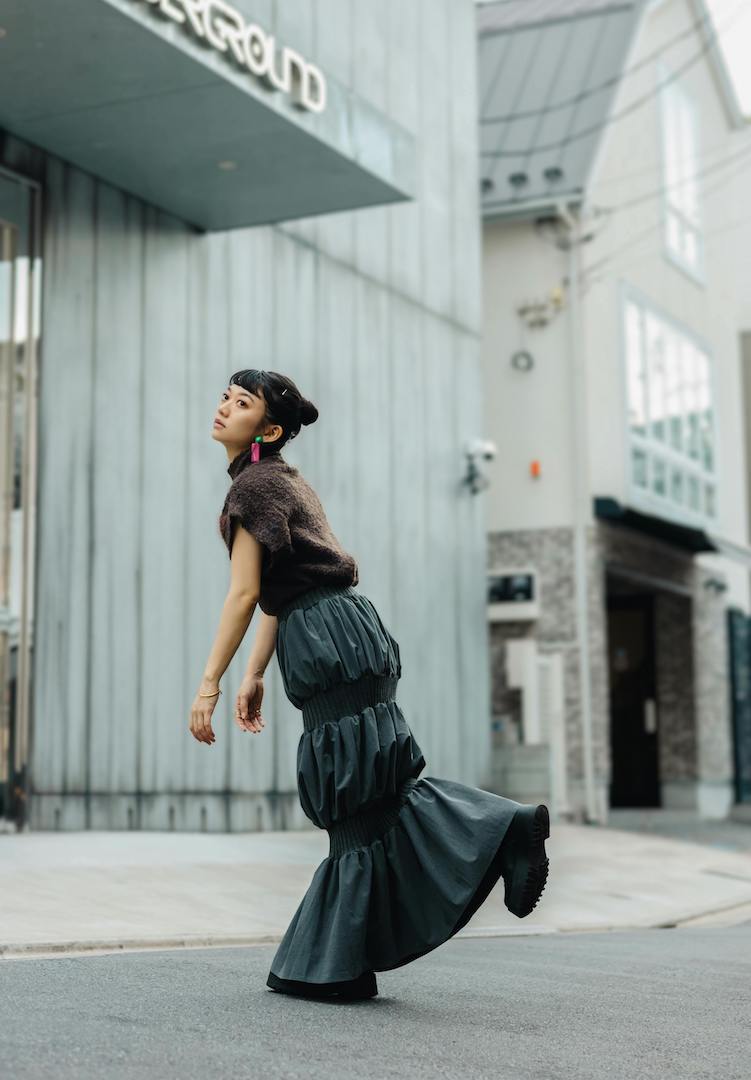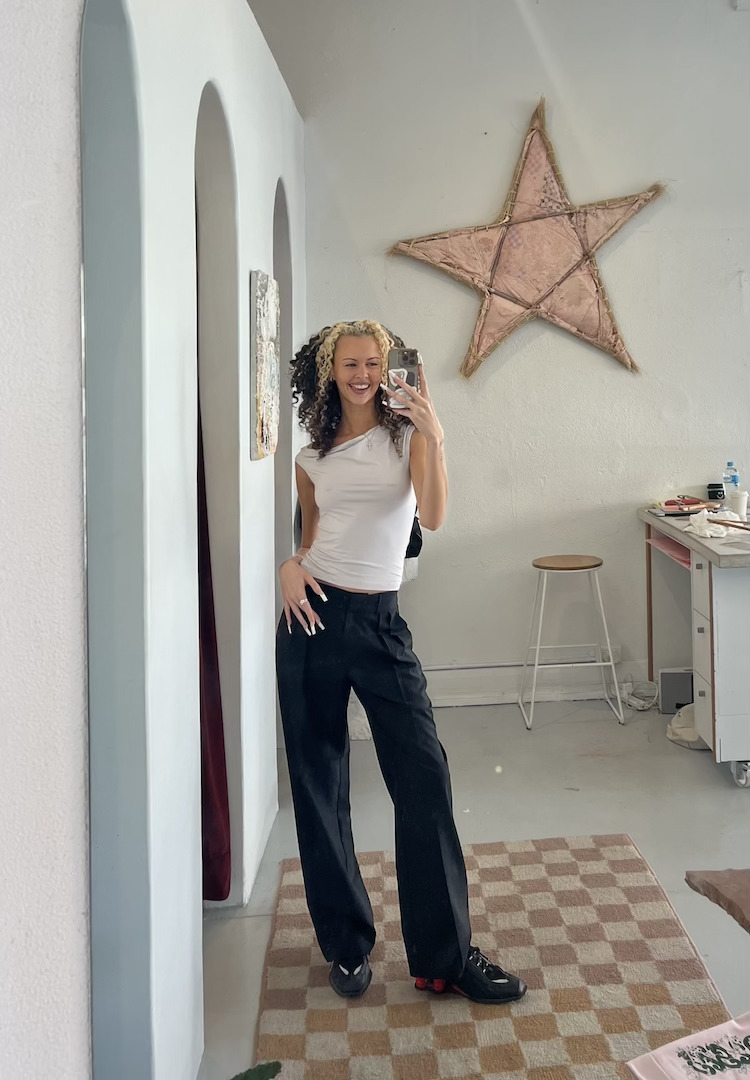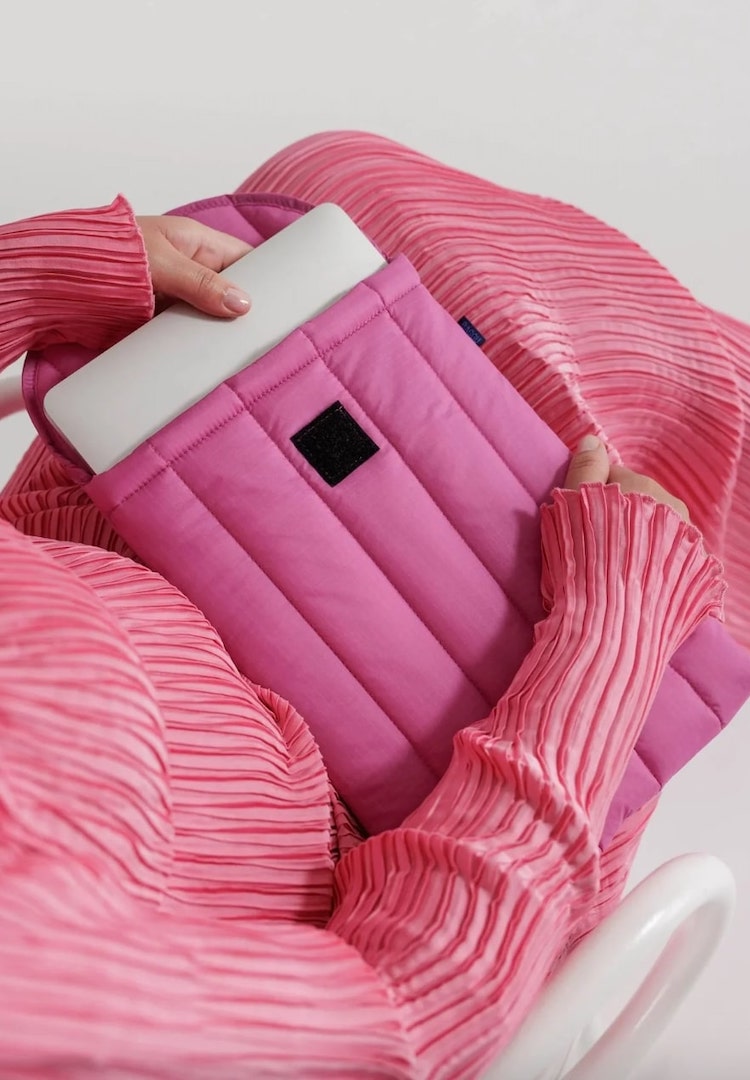Thinking of selling your clothes online? An experienced reseller shares her top tips
IMAGE VIA @K_DROBE/INSTAGRAM
WORDS BY BRONTE WINNEM
“It’s best practice to always have your buyer in mind when listing an item.”
Secondhand shopping has moved well beyond the confines of $5 bins at garage sales and the overstuffed racks at Vinnies. You don’t have to look far to see that the buying, selling and exchanging of preloved items has well and truly cemented itself in mainstream fashion, particularly with my kin (Gen Z’ers).
Its allure is multifaceted. Whether your priority is securing an envy-worthy one-of-a-kind piece that no one else can get their mitts on, or you’re trying to shop more sustainably and affordably with the environment front of mind, there’s no denying that for many it’s the favoured way of shopping in 2023.
For more fashion news, shoots, articles and features, head to our Fashion section.
With roughly three out of four Australians purchasing secondhand clothing in the last year alone, it’s clear to see why the vendor side of the resell market is just as crowded and lucrative as the consumer side.
Georgie Kibble, the founder of Sydney-based secondhand reselling account @k_drobe, was ahead of the curve when it came to reselling her clothes online. Starting at just age 15, she quickly realised it was a great way to make a little extra cash to spend at recess. 10 years later, it’s turned into a fully-fledged side hustle for her. Below, Georgie tells us about the creation of K Drobe and her best tips for how to list and sell your own clothes online.
How did you get into selling secondhand pieces online?
I think I’ve always had an entrepreneurial bone in my body. It started with selling cakes to neighbours when I was about eight, to making jewellery and selling to friends in school. The re-sell market was a lot more scarce in 2013 than it is now. After seeing a few other accounts selling their clothes pop up on my Valencia-filtered feed, I decided that I wanted to have a go myself.
View this post on Instagram
I created an account purely out of the desire for some extra canteen money and to justify buying more clothing. It’s grown over the years, turning into something of a side hustle (outside of my full-time marketing role).
How do you choose what to sell and what to keep?
If I am pulling from my own wardrobe to list on K Drobe, I always think ‘Would I put this on now and walk out the door wearing it?’. If the answer is ‘No’ then it goes in the box I have aside for my next run of taking photos. If I don’t feel confident in something, what is the point of owning it?
To maintain consistency and a regular schedule of posts with new items, I do have to source items for the page specifically. I do this at secondhand clothing stores and charity shops as well as online platforms like Depop and even market stalls or car boot sales. When purchasing with the intention to sell, my main tips would be:
- Be aware of current trends, but don’t let them govern your choices entirely – everything comes back around, right?
- Go in with a clear idea of what you might be looking for, be it a pair of pinstripe pants, ballet flats or even just a certain colour-way. Go straight to that aisle and begin there, it will make the whole experience a little less overwhelming.
- Look for bright colours or prints. Sometimes you can find a gem that imitates that of higher fashion brands like Missoni or Jacquemus.
- Don’t look at items quite literally for what they are. Try and think outside of the box. Can the length be altered? The sleeves taken off? Would this dress make a cute top?
Where is the best place to resell clothes online?
View this post on Instagram
I mostly use Instagram. Although this can be risky, the impulsivity and exclusivity of items can influence buyer behaviour. Story posts on your personal Instagram are also a great tool for selling clothing. The best perk of selling on Instagram is that there are no fees associated with selling and you are more likely to engage and build social relationships with more trustworthy buyers.
Joining specific groups associated with different brands on Facebook is another great way to target a niche market. Usually, there aren’t any fees with this, although I would suggest taking caution, as there are plenty of scammers across these pages.
Platforms like Depop or eBay are also great platforms to get your start. Although they do take a percentage of sales, this is for a good reason as the market is significant. Consignment sites such as Vestiaire Collective and The Real Real lend themselves better to selling higher-end pieces. Although fees can go up to 50 per cent, the chances of selling are relatively high given the security of their authentication processes and pre-established customer base.
What are your main tips for listing an item?
After many years of trial and error, these are the things I think make a real difference when it comes to posting and actually selling a piece:
- Natural light is everything!!! Please never underestimate this. Harsh bedroom lighting might make do, however, from personal experience, the same item takes a completely different picture in different light.
- Showcase the item in a variety of ways. I model it on my body and style it how I would wear it. This may inspire the customer and prompt ideas on how they would wear it too. Flatlays are also a great tool for showcasing the item as the hero. Make sure this is on a clean, neutral background (I use a waffle bed sheet). This is just my personal taste, but I steer away from any photos of them hung up. Not all clothing pieces have very good hanger appeal, so to keep it consistent I avoid photographing them that way entirely.
- Invest in a steamer or use the iron! Who wants to buy something that looks like it’s been scrunched in a ball at the bottom of your wardrobe for a year?
- Make sure to always have details and images of any faults the item may have. Not only are you going to save yourself a lot of time later as people will always ask for images anyway, but mentioning a stain or tear might sound worse than it is, so it always helps to have evidence.
- Write as many details as possible when describing the item. It’s best practice to always have your buyer in mind when listing an item. What would you look for when something pops up on your feed? Make sure to include things like brand, size, condition, RRP (if known) and any other bits of important information. I always list my height, if I think the item runs big or small, and if the item is vintage. Sizing was a little different back then and can confuse buyers quite easily.
How do you navigate interacting and dealing with customers?
View this post on Instagram
I do place a lot of emphasis on remaining consistent with posting items and upholding a nice social presence. I aim to post three to four pieces a week at least, breaking up posts with aesthetic photos to ensure the feed looks good and is easy on the eye.
Working through Instagram does make it extremely easy to communicate with customers directly. I try to be extremely responsive, especially when a potential buyer enquires about live items on the page as I run bidding through the comments for 24 hours only (there are some exceptions). The downside to facilitating a business on Instagram is that it does make it a little difficult to ensure buyers follow through after the thrill of the bidding ends.
Because of this, I was forced to implement a strict 24-hour payment policy to avoid time wasters. I since have encountered fewer issues around this. Most of the buyers are repeat customers (which I am extremely grateful for!). It is extremely important to be clear on policies prior to payment. Things like no refunds (unless the item has faults outside of that described), shipping charges and handling are important to clarify.
What is one thing you wish you knew when you started K Drobe?
I wish I knew I was onto something different, and that I should trust my instincts. While the fashion space is a little saturated these days, I think if you have something unique, whether that be a product or process, back yourself. Even if it is just a creative outlet, it’s a pretty cool thing to say you can earn money from a hobby.
For more on how to sell your preloved clothes online, head here.

